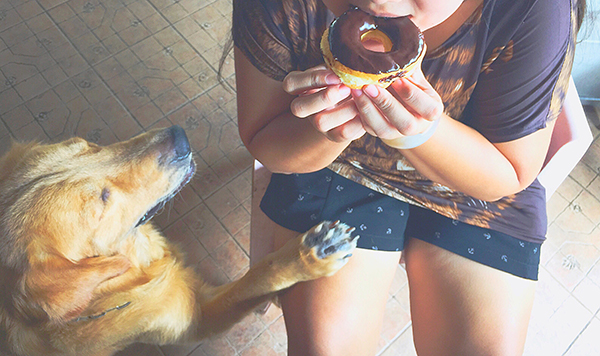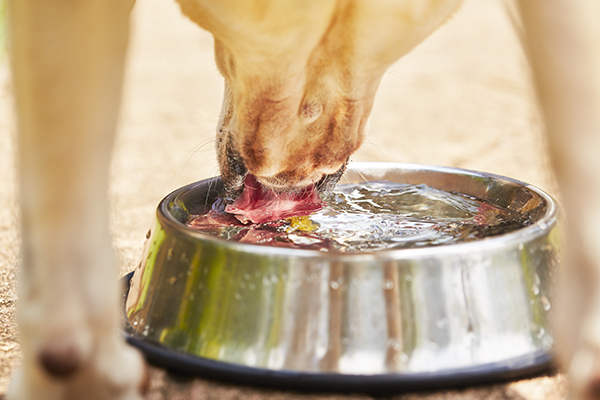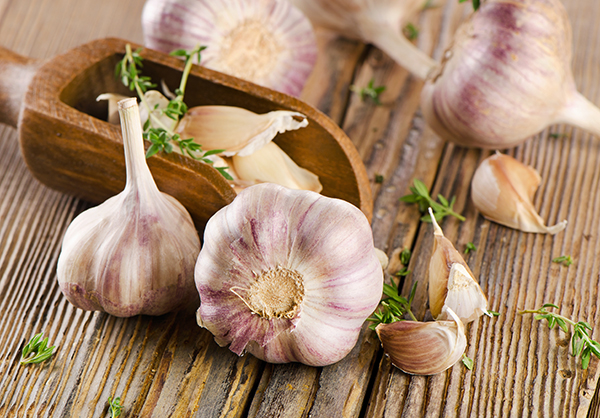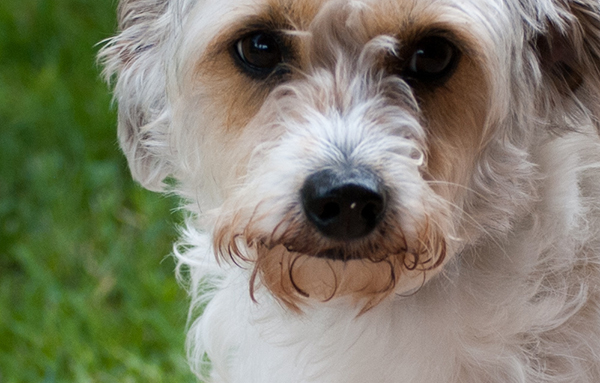
by Admin 2 | Jun 29, 2016 | Cat Health, Dog Health
We have put together some natural remedies to help your pet keep calm this Fourth of July.
As you can imagine we’re coming up on the dogcatcher’s busiest day of the year. In the US, there are more dogs found wandering loose on July 4th than any other day of the year. And for good reason; parades with loud sirens and fireworks are not a dogs best friend. I could also hypothesize that all the outside grilling could make some dogs jump the fence in hope of snatching a hotdog too! Seriously though, having an anxious dog on the Fourth of July is no laughing matter. Many pets (cats too) will whimper, hide, pace, bark, meow, or even become aggressive from the stress.
6 Tips to Keep Your Pet Calm
1. Exercise early on and throughout the day. Just like it is with people, exercise is a great way to manage stress. Toss a frisbee , play fetch with a chuckit
, play fetch with a chuckit  or simply go for a run or walk. Cat’s can play too! Interactive toys like Da Bird
or simply go for a run or walk. Cat’s can play too! Interactive toys like Da Bird  or playing with a laser light
or playing with a laser light , can help reduce tension.
, can help reduce tension.
2. Keep your pets inside during parades and fireworks. If possible, turn on the air-conditioning and keep the windows and curtains closed. If you, or any other human, can stay at home with your pet, that is ideal. If not, crating is a wonderful option – IF they are already used to and comfortable being crated. If they’re not used to being crated, set up a special place (dogs tend to prefer small areas like a bathroom or walk-in closet) with blankets and a few favorite toys. White noise or calm music is also a great way to drown out the sound of fireworks. Make sure your pets have access to water and that your cats have access to their litter box too.
3. Stop by Struttin Pup and pick up a ThunderShirt . Swaddling worked for my kids and it can work for your pet too! The Thundershirt applies a gentle, constant pressure on a pet’s torso and has been shown to reduce anxiety in approximately 80% of pets who wear it.
. Swaddling worked for my kids and it can work for your pet too! The Thundershirt applies a gentle, constant pressure on a pet’s torso and has been shown to reduce anxiety in approximately 80% of pets who wear it.
4. Are your pets wearing a properly fitted collar with up to date contact information on their ID tags? Just in case your pet decides to become an escape artist, you’ll want to make sure they can get back home to you.
5. You may not think about your pet’s stomach when anticipating anxiety, but many pets tend to have diarrhea, gas or digestive upset when dealing with stress, like fireworks. In Clover’s OptaGest 
can help prevent these unwanted side effects of stress.
6. Use one of the many calming aids available at Struttin Pup. Sweet Potato Chews containing chamomile, Merlin’s Magic Calming Spray, Rescue Remedy for Pets, Daisy Paw aromatic collar companions and Pet Releaf CBD oils and treats.
for Pets, Daisy Paw aromatic collar companions and Pet Releaf CBD oils and treats.
Stay safe and have a wonderful 4th of July!

by Admin 2 | Jun 23, 2016 | Dog Health
Foods that are off limit to your dog.
Let me start by saying that I am NOT that person that never feeds their pet human food. I do. In fact, if I could, I would make my dog each and every meal from scratch (making sure to supplement appropriately!). But these crazy things called time and convenience keep coming up, and so, a raw dog food patty is usually the go-to dinner for my dog.
In addition to all the crumbs my kids drop, my dog, Sage, gets plenty of human foods stuffed and frozen inside a Kong. And while there are a hundred times more foods that dogs CAN eat compared to what they CAN’T eat, we wanted to give you a quick list so that you can keep your dog healthy, happy and safe.
Without further ado, here’s a quick list of human foods for your dog to avoid!
- Chocolate – This is the one off limits food you’re probably most aware of. Besides the caffeine, the theobromine and theophylline can be toxic and cause panting, vomiting and diarrhea and can damage your dog’s heart and nervous system.
- Cooked Bones – Cooked bones, no matter what their size, can splinter and cause broken teeth; mouth or tongue injuries; can get stuck in the esophagus, windpipe, stomach, or intestines; can cause constipation or severe bleeding from the rectum; and even Peritonitis which is a hard-to-treat bacterial infection of the abdomen caused by bone fragments poking holes in your dog’s stomach or intestines. Raw Bnes and Recreational Bones are safe though, just make sure to supervise and remove when they are chewed down to small chunks.
- Corn On The Cob – This is a sure fire way to get your dog’s intestines blocked.
- Grapes and Raisins – They contain a toxin that can cause severe liver damage.
- Macadamia Nuts – They, too, contain a toxin that can result in weakness, panting, swollen limbs, and tremors. They can also damage your dog’s digestive, nervous, and muscle systems.
- Onions & Chives – It doesn’t matter if they’re raw, dry, cooked or a powder, onions are scary stuff for dogs, and even worse for cats. They contain disulfides and sulfoxides which can cause anemia and damage red blood cells.
- Persimmons, Peaches and Plums – It’s their seeds or pits that are the problem. Persimmon seeds can cause inflammation of the small intestine and the pits of these fruits can cause intestinal obstruction. And if the peach or plum pit is broken open and consumed, it’s poisonous (it contains cyanide)!
- Xylitol – Popular in candies, gum and baked goods, this sugar substitute can cause low blood sugar, seizures, liver failure and even death for your dog.
And finally, here are few off-limit foods that we can’t imagine why you would give them to your pup, but just in case…
Alcohol, Tobacco, Marijuana and Yeast

by Admin 2 | Jun 15, 2016 | Dog Health
Don’t hurt your dog in the heat!
Yes, it’s Colorado. Where it’s 85 degrees one day and snowing the next. But summer really is here and Struttin Pup wants to make sure your dog stays safe and cool during the Dog Days of Summer! Here’s how:
Keep ‘em home
Every summer, dogs die from being left in hot cars. Unfortunately rolling down the windows doesn’t help. In fact, studies show that an open window makes no difference. Even when it’s only 75 degrees outside, the inside of a car will reach 100 degrees within 10 minutes. So make sure you bring your dog INSIDE Struttin Pup when picking up his weekly supplies! Watch a little video here.
Use dog boots
Heat rises from the ground, especially on surfaces like cement and rocks (think Fruita, Moab, Mt Sanitas). Dogs absorb and release heat through their feet. Every summer, vets treat dry, cracked and bloody dog pads because your dog wanted nothing more than to keep up with you on your hike or bike ride in the summer time. Protect those tootsies…use booties
Hydrate, hydrate, hydrate
Dogs can’t sweat. Know the signs of heat stroke: heavy panting, lethargy, excessive drooling, bloodshot eyes, red gums and tongue, diarrhea, lack of coordination, and a rapid pulse. Dogs with darker coats will absorb more heat than lighter coats, and overweight dogs are a higher risk of dehydration as well. Make sure your dog has plenty of water at all times. On hikes bring a H2O4K9 Water Bottle or bowl. Ruffwear Bivy Bowl
or bowl. Ruffwear Bivy Bowl 
Keep your dog cool from the bottom up
Cool your dog’s paws and stomach, not just his head and back. Putting down a cool, wet towel for your dog to lay on will do more good than placing it on the top of its coat.
Swim
Instead of going for a walk, head over to Coot Lake, Boulder Creek, Louisville’s Dog Park or anywhere else that your dog can get it’s feet wet and cool down! Remember to keep your dog on a leash when and where they have to (Read Leashed or Unleashed) and mark your calendar for end of summer pool closings when they allow dogs in during the final weekend!

by Admin 2 | Jun 7, 2016 | Chickens!, Dog Health
Apple Cider Vinegar… it has amazing health benefits for people and is equally amazing for our dogs. Some of the many health benefits Apple Cider Vinegar has on people are:
it has amazing health benefits for people and is equally amazing for our dogs. Some of the many health benefits Apple Cider Vinegar has on people are:
- Kills bad breath
- Keeps you full longer
- Has a beneficial effect on Blood Sugar levels
- Helps clear up sinuses
- Can boost energy
For dogs, Apple Cider Vinegar has similar positive effects:
- Improves digestion
- Clears skin of fungal and bacterial infections
- Alleviates itching
- Relieves muscle fatigue
- Makes our dogs less attractive to biting insects
But what about chickens? Are you a backyard chicken farmer? Did you know that Struttin Pup carries Scratch and Peck Feeds? Scratch and Peck Feeds are Organic, Non-GMO, Soy Free, Raw and Whole Grain. If only we ate so well! At least, now, your chickens can, because after all, “you are what your animals eat!” In this week’s guest blog, we’ll explore the ways that ACV (and garlic too!) can help your flock. It’s so simple and inexpensive, it would be silly not to do!

If you are looking for ways to provide additional nutrients to your chickens, look no further than your kitchen cupboard. Two inexpensive and simple items that can greatly benefit your flock are raw garlic and organic apple cider vinegar (ACV). Similar to the health benefits that humans gain from garlic and ACV, chickens too can reap many rewards from these ingredients, including micronutrients, probiotics and antibacterial goodness.
Apple cider vinegar, made from organically grown apples, isn’t pasteurized and retains many of the nourishing components of the fruit. It provides fermentation bacteria that support chickens’ health and development, similar to that of fermented feeds. ACV for chickens can lower the pH in their digestive tract, creating an unfavorable environment for intestinal worms and harmful bacteria. It can also kill dangerous bacteria in the throat that may cause respiratory illnesses. For growing layer hens, organic ACV can increase calcium absorption, which leads to stronger egg shells.
Providing a dose of ACV to your chickens is as simple as adding it to their water. Be sure to start with organic, raw, unfiltered, and unpasteurized vinegar. Bragg’s is a well-known brand, and their Organic Apple Cider Vinegar is widely recognized as a quality product. Mix one to two teaspoons of apple cider vinegar for each gallon of water and use only non-metallic containers. The acidic nature of vinegar can react with metal, so it’s important to use glass or plastic drinking containers for your chickens when adding ACV. Be conservative with using ACV during hot months when hens consume less feed and are therefore taking in less calcium. The acidity in the vinegar can inhibit the calcium absorption necessary to produce eggs with strong shells. Adding ACV to water is best done in cooler months months when hens are not under heat stress.
Around the coop, ACV can be used on tough-to-clean surfaces, such as the brooders and cages. A few drops placed in corners or sprayed directly on the inside walls can help repel pesky flies and ants. Many backyard homesteaders use ACV to eliminate mold, mildew, dust, and odors from around their coops. Simply add a few teaspoons of raw, organic ACV to a spray bottle of water, spray the dirty surfaces, and wipe with a clean rag. If more elbow grease is needed for a particularly dirty surface, mix apple cider vinegar with coarse sea salt to safely rub off any build-up. Baking soda mixed with a small amount of water also works. Finish with a spray of ACV solution to disinfect.

Garlic’s Immune Boosting Odor Control
Like ACV, garlic is its own wonder of nature when it comes to preventing chicken illnesses. Parasitic worms that interfere with digestion and food absorption cannot process the sulfur contained in garlic. Immune systems can also be boosted from garlic. As a bonus, chickens that regularly feed on garlic may experience reduced odor in their droppings! The recommended ratio of garlic to water is one clove to one quart of water. Mash the garlic glove slightly and drop it into the water. If you are providing the garlic to chicks or to your chickens for the first time, add it to the water in smaller doses so they can acclimate to the flavor, and then slowly increase the amount of garlic over time. The younger you can get your chickens used to the flavor, the sooner they can begin reaping the benefits of garlic.
Because chickens are susceptible to many types of illnesses, incorporating these natural and easy-to-find remedies into their diets is smart preventative care. Raw, organic apple cider vinegar and raw garlic are inexpensive, accessible, simple, and effective means to keeping your hens in optimal health.
Read this post in its original form at Scratch and Peck

by Admin 2 | Jun 2, 2016 | Dog Health
Tear stains…they drive you crazy!
How to clear up tear stains is one of the most frequently asked questions we get from our customers. Because tear stains themselves are reddish-brown, they tend to be more obvious in breeds with light-colored coats like the Maltese.
And most popular commercial tear stain products, including Angels’ Eyes, Angels’ Glow and Pets’ Spark, contain the antibiotic tylosin tartrate, which is not approved for use in dogs or cats. Antibiotic-resistant bacteria is as much a problem for animals as it is for people, so avoid using products such as these.
What’s more is that while usually tear stains are simply an unsightly annoyance they can sometimes be a symptom of a more serious eye health problem. So, before we explore how to treat tear stains, let’s first look at its causes.
- Ingrown eyelashes
- Ear Infection
- Secondhand smoke exposure
- Plastic food bowls
- Stress
- Poor-quality diet
- Medications
- Excessive tear production
- Insufficient tear drainage
- Shallow or inverted eyelids
- Eye infection
- Eye injury
- Teething in puppies (if this is the case, tear stains should only be a temporary condition)
As you can see, there are a number of causes that you’ll want to rule out before treating, so it’s best to see your vet first (check out our Local Resources Guide for a list of great local vets). Once you’ve made sure that your dog’s tear stains are not the result of a more serious injury or trauma, you can begin to consider treatments.
Tear stains are typically the result of porphyrins which are naturally occurring molecules containing iron – waste products that are normally removed from the body through defecation (ie. pooping). In dogs and cats, however, porphyrin can be excreted through saliva, tears and urine. Some dogs simply produce more porphyrin. It’s not a dangerous thing; it just leads to annoying tear stains! When tears or saliva containing higher levels of porphyrins sit on light-colored fur, staining will occur. What’s more, because of the iron content, the stains darken when exposed to sunlight.
As previously mentioned, tear stains are usually reddish brown. However, if the stains are more brown than red, it’s possible that your pet has a yeast infection. Besides the brown coloring, your dog’s face may smell, which is indicative of a yeast infection. Figuring out if your dog suffers from a yeast infection vs a porphyrin stained face is important in determining the course of treatment. To make matters more confusing though, your dog could suffer from both simultaneously!
The final note, before getting to the “Just tell me what to do!” part of this blog is to realize that genetic predisposition plays a role in tear staining. While we suggest you test out different treatments, staining may continue to occur and complete elimination may never happen, depending on your dog’s genes. (How’s that for being the bearer of bad news!)
So, let’s get rid of these tear stains!
- First and foremost, keep your dog’s face clean by gently wiping his face two times a day with a clean, warm, damp, soft towel, see out face washing video on Facebook.
- Come visit our groomers and have them trim the hair around your dogs eyes.
- Feed your dog a high quality, natural diet – raw food if possible. A good quality diet will help boost your dog’s immune system, if you need help selecting the best food for your dog, please call us for your free personalized diet consult.
- Use glass or stainless steel bowls instead of plastic. Plastic can harbor bacteria that can cause irritation and contamination. Some cool bowls we think you’ll love are the PawNosh Cubby Bowl
 and Singyep
and Singyep 
- Use distilled or filtered drinking water instead of tap water which is often high in minerals and other impurities.
- After brewing some Organic Chamomile Tea
 take a cotton ball, soak it in the tea and gently clean your dog’s eyes.
take a cotton ball, soak it in the tea and gently clean your dog’s eyes.
- Use In Clover OptaGest Digestive Aid
 to support your dog’s immune system.
to support your dog’s immune system.
- Using a cotton ball, wipe your dog’s eyes with Colloidal Silver(118ml)
 which is completely safe to use around the eyes. Colloidal Silver has antimicrobial properties that can help clear up yeast infections as well as treat allergies, inflammation and infections.
which is completely safe to use around the eyes. Colloidal Silver has antimicrobial properties that can help clear up yeast infections as well as treat allergies, inflammation and infections.
The most important thing when it comes to your dog’s tear stains is to make sure there is not a serious underlying issue. Once you’ve determined that this is not the case, try out some of the suggestions above. With time, your dog’s tear stains will hopefully become a thing of the past. But, if your dog is just cursed with a genetic predisposition to tear stains, just remember, beauty is more than skin deep! Let’s face it; your dog loves YOU regardless of what YOU look like! We know you feel the same about your dog!

, play fetch with a chuckit
or simply go for a run or walk. Cat’s can play too! Interactive toys like Da Bird
or playing with a laser light
, can help reduce tension.
. Swaddling worked for my kids and it can work for your pet too! The Thundershirt applies a gentle, constant pressure on a pet’s torso and has been shown to reduce anxiety in approximately 80% of pets who wear it.
for Pets, Daisy Paw aromatic collar companions and Pet Releaf CBD oils and treats.









